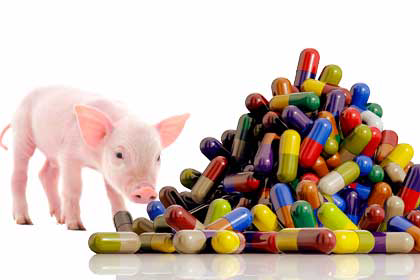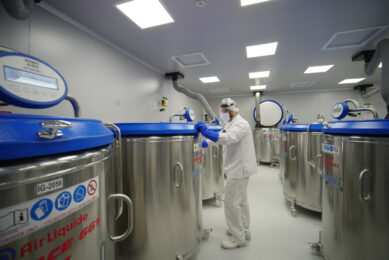BLOG: Europe asks EMA for antibiotic resistance advice

The European Medicines Agency (EMA) has been requested to provide advice by the European Commission (EC) on the impact on Public (Human) Health and Animal Health from the use of antibiotics in animals. Potentially, this is very good news, as long as the conclusions have not been pre-written.
The EMA is made up of the Committee for Medicinal Products for Veterinary Use (CVMP) and the Committee for Medicinal Products for Human Use (CHMP). Obviously, the human medicines sector dominates the EMA but each section is made up from representatives from each Member State (MS) and hopefully a balanced approach representing all MS’s opinions will be put forward, rather than the more extreme measures promoted by some countries. The CVMP have reviewed the use of fluoroquinolones, cephalosporins, macrolides and lincosamides in recent years and have issued sensible guidance on their responsible and safe use in veterinary medicine in relation to the surrounding issues regarding antimicrobial resistance. They are currently carrying out a consultation and review on a reflection paper on pleuromutilin use in animals.
EMA also offers the opportunity for both veterinary and medical sides to come together and agree a work plan to address the problem from both sides, make an impact assessment and put informed recommendations and advice to the Commission. When we had a meeting with the medical side in the UK in November, 2012, in London organised by the Royal Colleges of Physicians, Pathologists and Veterinary Surgeons, the overall conclusions were very clear – ‘antimicrobial resistance in humans was primarily associated with human use of antibiotics; antimicrobial resistance in veterinary medicine was associated with veterinary use in animals and the crossover between the two sides was actually negligible’.
They will also be involving the European Centre for Disease Prevention and Control (ECDC) and the European Food Safety Authority (EFSA) who has carried out extensive survey work on antimicrobial resistance in bacteria from food-producing animals and successfully identified the presence of extended-spectrum beta lactamase (ESBL) resistance in chickens, associated with “off-label” use of 3rd generation cephalosporins in broiler production. This situation was promptly addressed by the CVMP and EMA last year. The monitoring was successful and the response was proportionate and rapid. Surely, this is a better approach than embroiling the EU in this endless, political game with threats of draconian restrictions preferred by the extremists, which just upsets confidence in the agriculture sector, the food industry and the consumers.
The group will be able to seek the views of stakeholders on relevant topics, as part of the input to be considered when formulating its advice. The Heads of Medicines Agencies (HMA) might also wish to be consulted, as they represent each MS and have a good idea of what is going on in their own countries and what they need. Hopefully, the group will not call on just the extreme end of the spectrum advisors from the various lobbying groups and will be able to put forward sensible, logical advice based on good science.
The advice will be delivered in a step-wise approach, with the first outcome requested by June 2013 but finalisation is not expected before the end of 2014. It is hoped that the EC will wait for this advice and assessment of the impact of animal use of antibiotics on animal and human/public health before they introduce new guidelines or regulations on the use of antibiotics in animals for food-production, which may subsequently be proven over-prescriptive and equally unnecessary.
Press release from EMA











